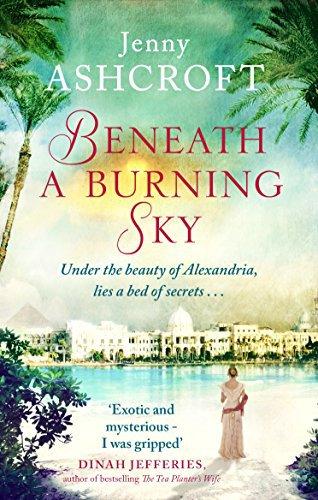 Today’s guest Jenny Ashcroft is an author I’ve wanted to feature on the Literary Sofa for ages and it’s wonderful that the moment has now come… Jenny and I met online a few years ago, when we read each other’s manuscripts prior to publication and got to know each other in real life. All writers need companions on the road and I’m very grateful to Jenny for more than one perfectly timed morale boost. It’s been exciting to watch her make the progress I never doubted.
Today’s guest Jenny Ashcroft is an author I’ve wanted to feature on the Literary Sofa for ages and it’s wonderful that the moment has now come… Jenny and I met online a few years ago, when we read each other’s manuscripts prior to publication and got to know each other in real life. All writers need companions on the road and I’m very grateful to Jenny for more than one perfectly timed morale boost. It’s been exciting to watch her make the progress I never doubted.
It was clear from reading Jenny’s first novel Remember Me (published by Goldmann in Germany in 2014 as Die Frauen vom Rose Square), that she has a genuine feel for history and for capturing it on the page. Building on this, her UK debut Beneath a Burning Sky shows a transporting sense of place, even when it’s one which has changed beyond recognition. In today’s Writers on Location Jenny shares her experience of recreating a vanished Egypt, and my review follows:
For me, there was never any question as to whether to base Beneath a Burning Sky in Egypt, although to explain why I decided on this particular setting is almost as difficult as putting my finger on where the characters themselves sprang from. It wasn’t just my long-standing fascination with the country that made me choose it (although it was that, too); there simply didn’t seem to be any other place but there for this story to play out. Just as the characters took shape of their own will – filling out, becoming breathing, talking people – so too was the world of colonial Egypt, back in the summer of 1891, inarguably theirs from the very start.
I’ve visited Cairo in the past, and enjoyed several brilliant books set there. At first, it seemed the obvious choice of city for Beneath a Burning Sky. But the more I researched the history of colonial rule in Egypt, delving into the diaries and letters of the people who’d lived there, the more I fell in love with the beautiful, teeming streets and rugged coastline of Alexandria. I discovered a world I couldn’t let go – one nestled between the Mediterranean and the desert, with villas perched on rocky coves, and crowded city alleyways scented with spice, noisy with the thrum of countless foreign tongues. I pored over the sepia photographs and found deserted beaches, British clubs and native slums, and as I did, scenes spiralled up before me: women with parasols strolling down stuccoed avenues; a Bedouin family pitching a tent outside a palatial British mansion; a girl in local robes, hugging two ragged children on the steps of a crumbling house. I forgot Cairo, and knew Alex was where my story belonged.
But how to recreate this distant place, to do the setting justice? With my first novel, set in Europe during the First World War, I was largely writing about places I knew, and managed to travel to Ypres to research it: an unforgettably moving trip. This time though, it wasn’t possible for me to visit Alexandria, so I had to take myself there in other ways. I drew on my memories of Cairo, summers on the Mediterranean in Greece (my father’s half-Greek, so I had a few to pull on), picture journals and newsreels, historical records. The writings of E.M. Forster, based in Alex with the Red Cross during the First World War, proved both a joy to read, and invaluable to conjuring this colonial place, his cosmopolitan city and sand and stone. Perhaps it also helped that I wrote most of Beneath a Burning Sky whilst still living in the broiling humidity of Singapore, with traces of its own colonial era everywhere. I remember one baking Friday I took my children for tea on the packed veranda of the polo club whilst the players practised (another world, now, but one of their favorite treats then); I was chopping spaghetti, ceiling fans whirring overhead, ponies galloping past, and suddenly a different veranda sprang into my mind, back at the Sporting Club in 1890s Alex, Olivia and Imogen watching the polo and agonising over Clara’s disappearance as the brooding wind, hot with sand streaked through air abuzz with chatter and the clink of glasses, brushing the animated faces of Alexandria’s high society.
This sultry heat, the type of hot that after years of freezing English winters and disappointing summers Olivia didn’t think she would ever become accustomed to, and the exoticism of Alex, became so key to the story. Based anywhere else, it would have become a different tale entirely; the setting fed the plot, the characters. Olivia’s new home is on the shores of the Mediterranean; swimming in that sea becomes part of her rebellion against her violent husband (the fact that Alistair hated her doing so gave her reason enough to carry on). By contrast, the depravity of the native slums is what pulls Nailah and Kafele together, feeding their shared need to escape. The contrast between the worlds of rich and poor, British and Egyptian, drives so many of the characters’ motivations. The unforgiving heat of that summer – the relentless, burning sky – intensifies every emotion, each fear and temptation. The book is as much made from Alexandria, as it is from the plot, the characters.
I’m glad now that I didn’t get the chance to visit when I wanted to. I’ve spent so long immersed in the city that was, that I’m relieved it’s the one I know. So much has vanished, buried beneath blocks of flats and highways; a modern concrete sprawl. I’m happy to let Olly and Edward’s Alexandria – that melting pot of cultures; eclectic, beautiful, and not a little romantic – live on in my mind, just as it is.
Thanks to Jenny for this fabulously atmospheric piece – I always find it fascinating to hear how other writers succeed with challenges I would never attempt!
By coincidence, Jenny’s post on Beneath a Burning Sky comes straight after Vanessa Lafaye’s on Key West, setting of At First Light – immersive historical fiction with a strong setting and a combination of dark and romantic elements is having a moment on the Literary Sofa. If you’ve enjoyed either of these novels, do investigate the other – they share many qualities but are also completely different.

The final line of this guest post makes the perfect opener to my review of a novel which ‘lives on in my mind’. I read it on holiday seven months (and 56 novels) ago and certain scenes will stay with me far longer. This is an ambitious, consuming narrative with a large cast, rich back story and an intricate plot which lends itself to long stretches of reading (one of the reasons it’s amongst my Summer Reads 2017). In many ways it resembles a historical crime novel, which may explain why I occasionally found it a bit hard to keep track everything going on. This didn’t stop me becoming invested in a story which is cinematic in its vividness (visual and atmospheric) and packs an emotional punch. Above all, it is characterised by the interplay of darkness and light, in which searingly tender moments are spliced with scenes of squalor and brutality which highlight the subjugation of privileged British women alongside the lack of respect and human decency for the local population under colonial rule. Including both perspectives contributes something vital – and often missing – to the end result. If you enjoy historical fiction which is romantic but not romanticised and are looking for somewhere to lose yourself for hours on end, your search may well be over…
It’s rather nice that Beneath a Burning Sky and my novel Paris Mon Amour are practically neighbours on Red Magazine’s 50 Best Summer Beach Books!
*POSTSCRIPT*
In the final guest post before the summer break, I’m joined next week by Annemarie Neary with a very interesting piece on Fictional Orphans. Her third novel The Orphans is released today.
Advertisements
